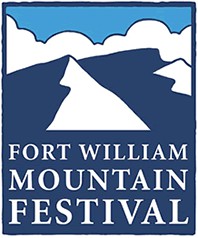 Myrtle Simpson, who pioneered skiing and guiding in Scotland, has been announced as the sixth recipient of The Scottish Award for Excellence in Mountain Culture. The award was presented at the Fort William Mountain Festival.
Myrtle Simpson, who pioneered skiing and guiding in Scotland, has been announced as the sixth recipient of The Scottish Award for Excellence in Mountain Culture. The award was presented at the Fort William Mountain Festival.
Myrtle was selected for this award for her massive contribution and devotion to mountain culture in Scotland and throughout the world and her involvement in the development of skiing in Scotland; having had a key role in the setting up of Glencoe, Cairngorm and Nevis Range Ski centres.
As a climber, skier, canoeist, explorer and adventurer she has travelled all over the world to pursue her passion; from New Zealand, Peru and China to Greenland and the high Arctic.
Mike Pescod, Chairman of the Highland Mountain Culture Association, organisers of the Fort William Mountain Festival, said: “With the mindset of a true adventurer and explorer and the enthusiasm, dedication and devotion to climbing, skiing and outdoor culture Myrtle Simpson is truly inspiring. She is the perfect ambassador for mountain culture.”
The annual award recognises and celebrates the achievements and accomplishments of one inspiring individual and their outstanding contributions to Scotland’s mountains, encompassing sport, theatre, art, photography, film and literature. It was set up in 2008 by the Highland Mountain Culture Association Ltd, organisers of the Fort William Mountain Festival, and is sponsored by Rio Tinto Alcan through Foundation Scotland. Previous winners include: Dr. Adam Watson (2012), Ian Sykes (2011), Jimmy Marshall (2010), Richard Else (2009) and Dr. Hamish MacInnes (2008).
2011 Award winner Ian Sykes, MBE, said: I can’t imagine anyone more deserving for this award. There are very few men or women who have done as much in the mountains as Myrtle; and a true ambassador for women climbers. She ticks all of the boxes. She’s got loads of gumption and still going strong, definitely an inspiration.”
Mike Pescod, added: “To some people, like Myrtle Simpson, the draw of the mountains is so strong that they devote their entire life to them and make a massive contribution to the culture surrounding them in doing so. Recognition of their talent and commitment is rarely sought or given and this award is one opportunity to do so. We feel that this award not only celebrates their achievements and contributions but also represents the recognition of their peers.”
Myrtle Simpson, originally from Aldershot, qualified as a Radiographer in the 1950’s and her first job was at the Belford Hospital in Fort William. At this time Myrtle had already discovered the magic of the hills and was used to walking miles. Whilst in Fort William she worked under the magic of Donald Duff, a Mountain Rescue pioneer, and became accepted by the local Lochaber climbers, who were lead primarily by Jimmy Ness.
Myrtle chose to camp at Achintee for an entire year where she spent all of her spare time climbing, walking and boating and during this time also learnt to ski on the golf course at Spean Bridge. At this time Myrtle may have been the first official mountain guide on Ben Nevis, where she guided clients up Tower Ridge. This innovative thinking allowed many less experienced and less confident climbers and outdoor enthusiasts to enjoy guided access to spectacular walking and climbing routes in the area.
However Myrtle had her sights set on higher mountains and travelled to New Zealand where, at that time there were very few climbers in the country. She managed to find many virgin peaks; along with major expeditions to the higher peaks such as Mt. Aspiring, a massive challenge that involved a three week walk in before any climbing could begin.
As soon as she moved back to Edinburgh she began planning an expedition to Peru. Funds from the Mount Everest Trust allowed herself and Billy Wallace to sail out to Lima where they met with Hugh Simpson. Together they climbed six new peaks, each over 19,000ft and were the first British climbers to reach the summit of the 22,000ft Huascaran via a new route.
Following this expedition Myrtle travelled home and was married to Hugh in 1959. Together, they began preparing for a six month spell in Spitbergen in the Arctic for Hugh to carry out research. However during this time Myrtle found out she was pregnant and, admitting to being “too selfish to stay behind”, they went as a family with a six week old baby.
Myrtle was also the first woman to ski across Greenland and had numerous journeys to arctic regions on ski or canoe. She also attempted to ski to the North Pole, and reached the most northerly point by a woman unsupported at the time. She can also add explorations of China and further expeditions to Peru to her many adventures.
Myrtle now tends to canoe more as she cannot carry vast loads and still ski’s and competes on the Scottish Masters circuit.
